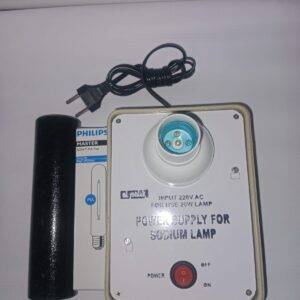Description
🔬 Full Wave Rectifier – Science Lab Equipment Description
A Full Wave Rectifier is a fundamental electronic device used in science laboratories, classrooms, and educational setups to demonstrate the conversion of alternating current (AC) into direct current (DC). Unlike half-wave rectifiers, a utilizes both halves of the AC cycle, resulting in higher efficiency and smoother output.
This equipment typically consists of a set of diodes arranged in a bridge configuration or with a center-tapped transformer, depending on the design. The bridge rectifier version employs four diodes to direct both halves of the input AC signal into a unidirectional flow, effectively doubling the frequency of the output ripple compared to a half-wave system.
Science teachers and lab instructors widely use full wave rectifiers to explain principles such as:
-
Rectification process
-
Diode functionality
-
Ripple factor
-
Filtering and voltage regulation
The unit is often accompanied by clearly marked input/output terminals, durable casing for safety, and is compatible with various transformer voltage outputs (commonly 6V to 12V AC). Students learn to analyze waveform behavior before and after rectification using this apparatus, often alongside oscilloscopes and capacitors to observe smoothing effects.
This model is particularly suitable for:
-
Physics and electronics practical sessions
-
Electrical engineering labs
-
Vocational and technical training institutes
By integrating real-world electrical concepts with hands-on experimentation, the helps build a strong foundation in electronics. Its safe design and educational value make it essential lab equipment for schools and colleges alike.
❓ Frequently Asked Questions (FAQs)
Q1: What is a full wave rectifier used for in a science lab?
A full wave rectifier is used to convert AC voltage into DC voltage. It’s a key tool in physics and electronics labs to teach students about rectification and circuit behavior.
Q2: What is the difference between a half wave and a full wave rectifier?
A half uses only one half of the AC cycle, while a utilizes both halves, making it more efficient and providing smoother DC output.
Q3: How does a full wave rectifier work?
It uses diodes arranged in a for my science lab?
Full wave rectifiers are available at science lab equipment suppliers or educational electronics stores, both online and offline.
Q9: What is the ripple factor in a FWR?
The ripple factor indicates the amount of AC ripple present in the DC output. Full wave rectifiers have a lower ripple factor than half wave rectifiers.
Q10: Is a bridge rectifier the same as a full wave rectifier?
A bridge is a type of that uses four diodes in a specific configuration to achieve full-wave rectification without a center-tapped transformer.





Reviews
There are no reviews yet.